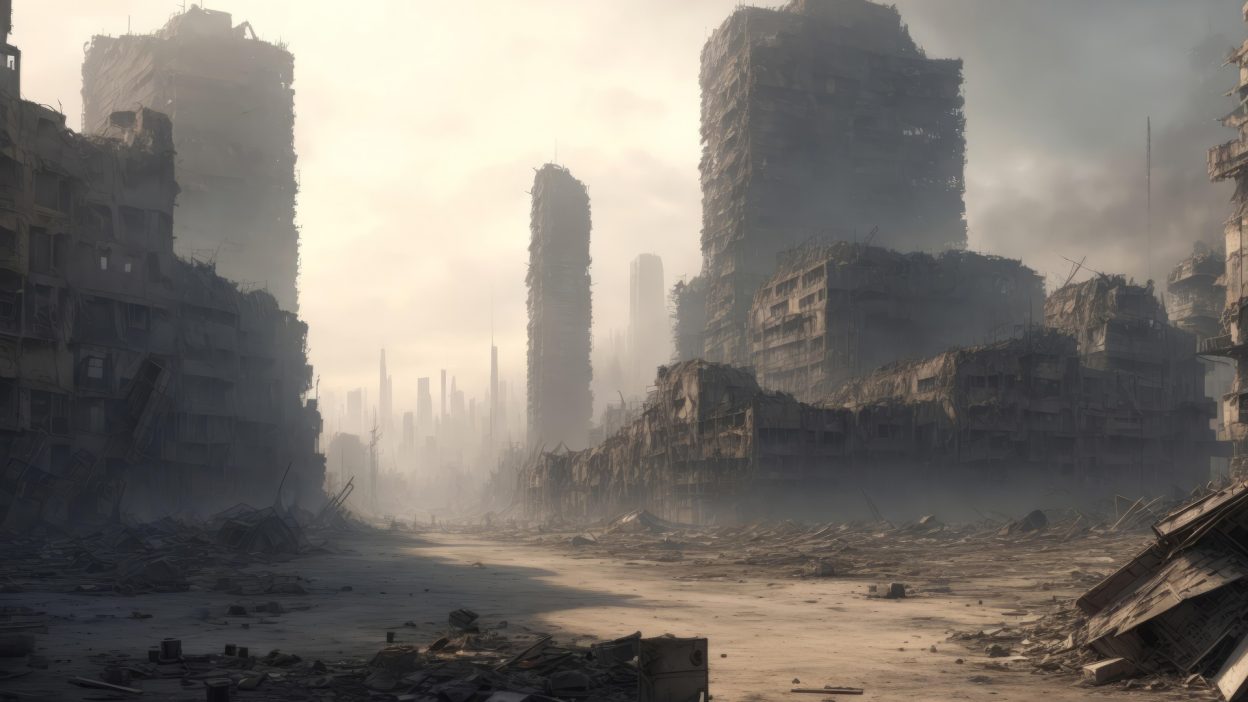The Earth Shook in Dali: How the 1925 Earthquake Shattered China
The 1925 Dali Earthquake, a catastrophic natural disaster that struck southwest China, left an indelible mark on the region’s history. It wasn’t just the immense loss of life that defined this tragedy, but the profound consequences for the people and the country. The earthquake measured a magnitude of 7.0, and its epicentre was located near the city of Dali, in Yunnan province. In a matter of moments, the ground cracked, buildings collapsed, and thousands of lives were lost. Entire communities were left in ruin, with survivors left to pick up the pieces in the wake of the destruction.
This tragedy exposed China’s vulnerability to such powerful seismic events and highlighted the lack of preparedness that could have alleviated the human cost. The aftermath of the earthquake showcased the limitations of China’s infrastructure and disaster management, leaving the country with lessons that would take years to fully understand and implement.
The Untold Truth Behind the 1925 Dali Earthquake
- Unveiling the Disaster’s True Scale
The full scale of the 1925 Dali Earthquake was not immediately understood. While the immediate effects were apparent, the true cost of the disaster—both in terms of human life and economic damage—took time to reveal itself. With around 6,000 deaths reported, entire villages were flattened, and thousands were left homeless. However, due to the remote nature of the area and limited communication infrastructure, detailed reporting was delayed, leaving many of the most devastating aspects underreported for years. - The Inadequate Government Response
At the time, China’s ability to respond to natural disasters was limited by the political instability and lack of resources. The government struggled to coordinate rescue operations and provide sufficient relief to the survivors. With minimal support and infrastructure, many victims were left to fend for themselves, exacerbating the human cost of the disaster. The disaster exposed the shortcomings of China’s disaster management systems and underscored the need for better preparedness. - The Human Toll: Lives Lost and Forgotten
While the earthquake caused significant loss of life, the long-term consequences were just as devastating. Many survivors faced the challenge of rebuilding their lives without proper support, and much of the emotional and psychological toll was overlooked. Thousands of families were left displaced, with little to no aid or resources to assist in their recovery.
Dali 1925: A Tragedy That Exposed China’s Vulnerability to Earthquakes
Before the Dali earthquake, China had experienced other seismic events, but none of them revealed the extent of the country’s vulnerability to natural disasters like this one. The region’s infrastructure, already weak, crumbled under the intense shaking, leaving communities stranded. The earthquake exposed the critical gaps in China’s urban planning and building construction, which were not designed to withstand such powerful forces of nature.
Additionally, the disaster highlighted how ill-equipped the country was in terms of disaster preparedness. There were no early warning systems or effective means of evacuating people, which led to a significant loss of life. The event underscored the need for modernisation in both infrastructure and emergency response, lessons that would influence China’s future disaster preparedness strategies.
How the Dali Earthquake Changed China Forever: Lessons We Still Haven’t Learned
The Dali Earthquake changed the course of China’s approach to earthquake preparedness. Following the disaster, China began to recognise the importance of seismic studies and the need for improved building practices in earthquake-prone regions. However, despite these realisations, progress in disaster management remained slow for many years. While some efforts were made to rebuild and strengthen infrastructure, the lessons from the 1925 earthquake often fell by the wayside, as political instability and other challenges took precedence.
The Dali Earthquake, though a wake-up call, was not the last of its kind. Future disasters, both natural and man-made, would continue to expose China’s vulnerabilities. Yet, in many ways, the changes brought about by the Dali earthquake were not as far-reaching as they could have been, and the country continues to grapple with these issues today.
When Dali Crumbled: The Shocking Impact of the 1925 Earthquake
The immediate impact of the 1925 Dali Earthquake was staggering. With entire cities reduced to rubble, the human toll was devastating. Thousands of people were killed, and even more were injured or displaced. Entire communities that relied on their homes and livelihoods were left without shelter, food, or water. The earthquake’s shockwaves spread far beyond the immediate epicentre, affecting areas that were ill-prepared to handle such a disaster.
The economic impact of the earthquake was just as severe. With much of the local infrastructure destroyed, the region’s economy was crippled. Recovery efforts were slow, and many people were forced to rebuild their lives from scratch with limited support. The long-term effects of the earthquake were felt for decades as the region struggled to recover.
Dali 1925: A Powerful Earthquake and China’s Poor Infrastructure Response
The 1925 Dali Earthquake laid bare the inadequacies of China’s infrastructure and disaster response at the time. Much of the destruction could have been mitigated if the region had stronger buildings and better emergency preparedness. The lack of modern infrastructure meant that many buildings simply couldn’t withstand the powerful shaking, leading to catastrophic damage and loss of life.
Additionally, China’s response to the earthquake was disorganised and under-resourced. Without a robust emergency response system in place, the government struggled to coordinate relief efforts. The disaster highlighted the urgent need for investments in disaster resilience, particularly in earthquake-prone regions.
The Forgotten Victims of the 1925 Dali Earthquake: A Tragedy of Neglect
While the Dali Earthquake caused widespread devastation, many of the victims of the disaster were ultimately forgotten. After the immediate aftermath, media attention quickly waned, and the survivors were left to fend for themselves with little assistance from the government. The true extent of the suffering, particularly in the years following the earthquake, was largely ignored.
The long-term consequences for survivors were also severe. Many were left homeless and without basic necessities, and the psychological toll of such a traumatic event was overlooked. The earthquake was not just a physical disaster—it was an emotional and social catastrophe that left deep scars on the community.
Dali Earthquake 1925: A Disaster That Could Have Been Prevented?
Although natural disasters like earthquakes cannot be prevented, the Dali 1925 Earthquake could have had a less catastrophic impact if better preparations had been made. With improved building codes and stronger infrastructure, many lives could have been saved, and the economic damage could have been mitigated. Additionally, a more organised and well-coordinated response could have alleviated much of the suffering in the aftermath.
The event was a stark reminder of the importance of disaster preparedness, and yet, many of the lessons learned from this tragedy were not applied in the years that followed. Could better infrastructure and a more effective response have prevented the scale of destruction? The answer is likely yes, but the lessons were not learned in time.
Conclusion: The Dali Earthquake: A Reminder of China’s Need for Disaster Preparedness
The 1925 Dali Earthquake serves as a painful reminder of the importance of disaster preparedness. Though China has made significant strides in improving its response to natural disasters in the decades since, the lessons of Dali were slow to be integrated into national policy. As we look to the future, it’s clear that investment in infrastructure and preparedness is essential to prevent such devastation from occurring again.
In many ways, the Dali Earthquake was a pivotal moment in China’s history, forcing the country to confront its vulnerabilities and take steps towards a more resilient future. However, as we reflect on this tragedy, it is important to ask: have we truly learned the lessons of Dali?
5 Short FAQs:
- What caused the 1925 Dali Earthquake?
The 1925 Dali Earthquake was caused by tectonic shifts along fault lines in the region, which led to severe ground shaking and widespread destruction. - How many people died in the Dali 1925 Earthquake?
Approximately 6,000 people lost their lives during the earthquake, though the true death toll may be higher. - Why was the Dali Earthquake underreported?
The earthquake was underreported due to the region’s remote location, limited communication infrastructure, and political challenges at the time. - What long-term effects did the Dali Earthquake have on China?
The earthquake exposed vulnerabilities in China’s infrastructure and disaster preparedness, influencing future disaster management policies. - Could the 1925 Dali Earthquake have been prevented?
While earthquakes cannot be prevented, improved infrastructure and better preparedness could have reduced the impact and saved lives.
References:
1925 Dali Earthquake – Wikipedia
Today in Earthquake History – USGS
Earthquake Ruins in Dali (1925) – China Science and Technology Museum
Very Strong Mag. 6.9 Earthquake – Yunnan, China, on March 16, 1925 – Volcano Discovery




